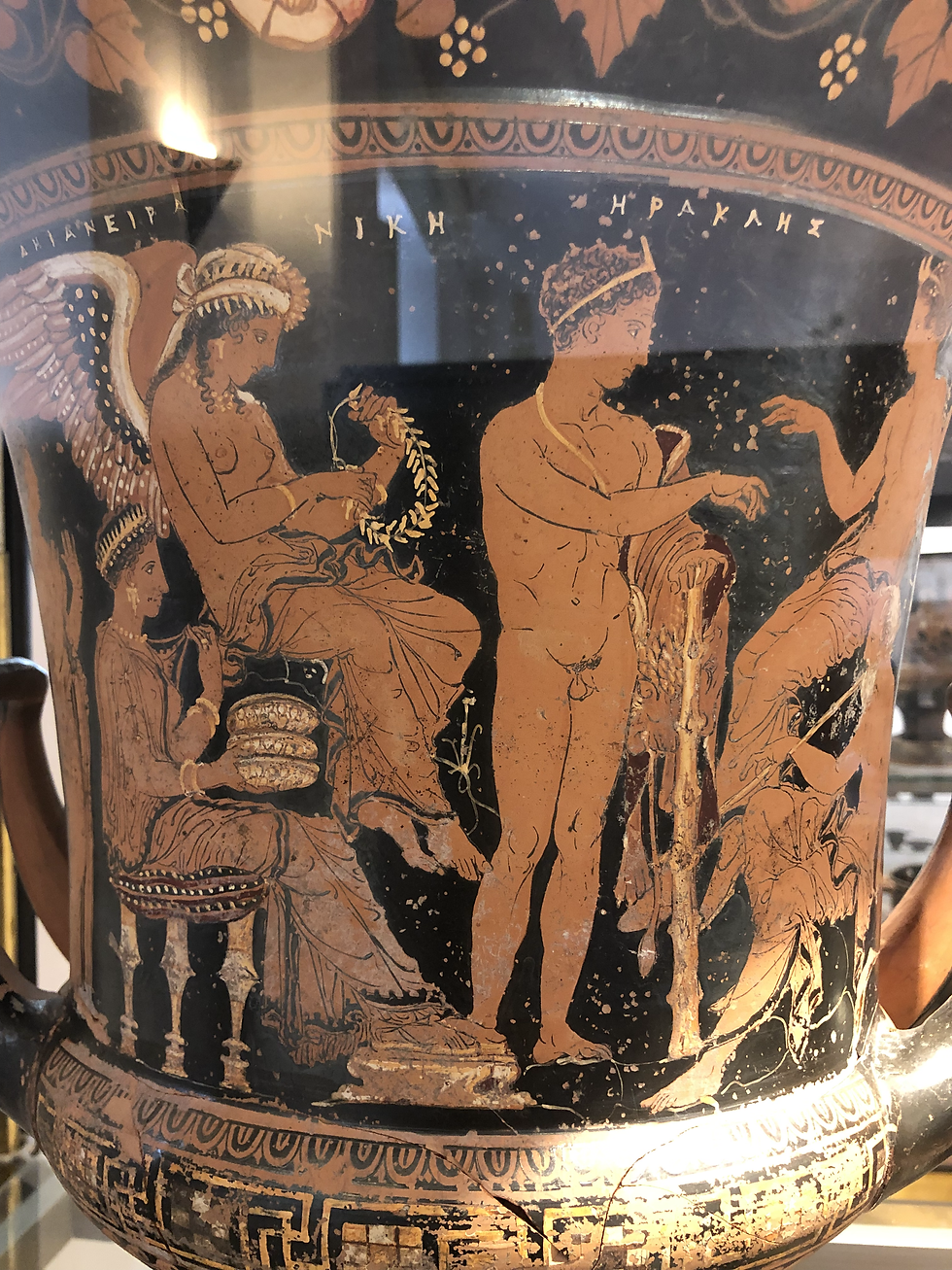E + 4 : Obsidian - More Valuable than Gold
- hbanziger
- Jul 14, 2021
- 4 min read
Never say no to a coffee offered in the morning. Have to admit – the Italian know how to roast their coffee. Wonder how they developed this specific passion – would be worth a blog. Espresso, Cappuccino & Caffe Latte have become such important parts of our culture.

Coffee on the back of the AFAET in the morning
We had arrived in Lipari just after midnight. There were strong headwinds, but we made it last night. The sky is now overcast. And winds are getting stronger. Friends of us are sailing today from Sardinia to Lipari – they sail with wind of 42 knots and are delayed by a few hours. But I guess they are having fun in such conditions! They are seasoned sailors!
.

The AFAET (blue boat) anchored in Lipari
We used the day to re-stock the boat. Two of our brave crew went first thing in the morning to the fish market. They were the first clients! The choice was excellent. We are going to have nice dinners for the next three days.

Selecting the best fish available
Sitting out the weather with not having much else to do, we decided to visit the Archeology Museum, located in the Spanish Citadel towering over Lipari. Had it only been built before 1544 when Hayrettin Barbarossa, the infamous corsair and later Ottoman Admiral, sacked the island! He enslaved the entire population and sold 3’000 – 4’000 Liparis to the slave markets in Northern Africa. Families were ruthlessly torn apart – it was the last time children saw their parents and wives their husbands. As always, Barbarossa left the old and weak behind. Why bother? They had no “commercial” value and would do a good job in spreading the horror story. Sadly, such behavior still exists. ISIS was doing the same in Syria and Iraq three years ago. No wonder the Knights of St John fought so hard during the siege of Malta nine years later - they knew what would await them were they defeated.

The Spanish Citadel was built on the foundations of the ancient Acropolis in 1556, twelve years after the sack of Lipari. It could protect the people living in the town but living in the country side remained dangerous until the 18th century.

Reconstruction of the ancient Acropolis - photo taken in the Archeologic Museum. Even after obsidian was replaced by bronze, Lipari remained a trading centre for centuries
The Museum is definitely worth a visit. The exhibits are precious but sadly not well presented nor explained. This museum could be such a jewel if it was run in a modern way. Most impressive is the house with the pre-historic exhibits. I did not know that Lipari was the largest source of obsidian stones which were sharper than flint stones and well thought after during the Stone Age by almost everyone in Europe who could afford it.

A large obsidian block at the entrance of the Museum
Obsidian stones from Lipari were found all over the Mediterranean indicating that there was already lively trading 7’000 years ago, around 3’000 years before the Bronze Age started. Human beings are just incredible. Not only did they find out that obsidian makes good knives, arrow heads and axes, but they also manufactured and traded the stuff widely.

Map of archeological sites where obsidian stones were found - most from Lipari
Wonder what type of ships they used. Having seen the sophistication of Greek ships from the 5th century BC (Kythera Boat), I would not be surprised if people already had larger boats than just canoes. Be it as it may, obsidian trading was lucrative and the Aeolian islands were at the centre of this trade for 3'000 years! Obsidian was worth more than gold!

Obsidian blades exhibited in the Museum - the Lipari produced blades, arrow and spear heads, axes and scrape knives for exportation
All Aeolian islands are of volcanic origin and therefore have plenty of basalts, obsidian and pumice stones. Whilst nobody uses obsidian any longer – except the few jewellers who make shiny, black necklaces – pumice is still in high demand. There is no SpA that does not have a few pumice stones to give us a good scrubb. Pumice is the perfect stone to remove old skin during a treatment. Am sure the ancient inhabitants of Lipari knew this as well.

The Pumice Beach at the Northern Tip of Lipari island
The Museum held other jewels from later settlement periods. The most precious were from the Ancient Greek time

The large Amphorae Collction was found in a Shipwreck
by a RAF Scuba Diving Team and brought to the surface

There is also a large Collection of Vases from Athens

And last but not least this most delicate trove of golden jewellery
If this Museum were in London, New York or Paris, it would be a big hit with visitors. Maybe one day one of these curators discovers. it and gives them a hand in making the exhibition more accessible and easier to understand. The Museum definitely merits a visit.







Comments